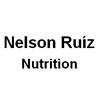Explore all the information on
Feed formulation
Welcome to the page about Feed formulation of Engormix; a source of knowledge on Feed formulation.
James Wen (Evonik Animal Nutrition) explains how NIR calibration helps address feed ingredient variability by measuring factors like trypsin inhibitors and reactive lysine, ensuring consistent quality and nutrient balance for optimal animal performance.
...
Comments : 3
Recommendations: 2
Introduction The dairy industry continues to provide a nutritious food source to our growing global population. Throughout history this industry has undergone significant evolutions contributing to a “more sustainable” product. But what does sustainability really mean, and in animal agriculture, why do we care? According to the U.S. National Environmental Policy Act (NEPA) of 1969 sustainability is to “create and maintain conditions, under which humans and nature...
Comments : 0
Recommendations: 0
.jpg&w=3840&q=75)

Rendering impact on carbon footprint reduction
Suggested link
Introduction Trace minerals exist in cells and tissues of the body in a variety of chemical combinations and characteristic concentrations, depending on the trace mineral consumed and the tissue in which the trace mineral is metabolized (McDowell, 1992; Underwood and Suttle, 1999). Concentrations of trace minerals must be maintained within narrow limits in a cell (McDowell, 1989, 1992; Underwood and Suttle, 1999). Trace mineral deficiencies, toxicities, and imbalances require the...
Comments : 0
Recommendations: 0
Introduction The global agricultural sector, including associated land-use changes, was responsible for emitting 10.6 gigatons (Gt) of carbon dioxide equivalent (CO 2 e), contributing considerably to the overall 53 Gt CO 2 e of global greenhouse gas (GHG) emissions (FAO, 2023). In the United States, the agriculture sector contributed 0.59 Gt CO 2 e in 2022, representing 9.36% of the nation's GHG emissions. This marked a 7.7% increase from 1990 levels...
Comments : 3
Recommendations: 0
Mr. Ricky Thaper, a key opinion leader with 30 years of experience in India's poultry sector, reflects on the industry's impressive growth. He discusses the challenges of maintaining high-quality soybean meal in poultry feed, highlighting the detrimental effects of cost-cutting measures and emphasizing the need for improved standards and the efforts of poultry associations to ensure soybean meal retains its nutritional value and protein quality for optimal poultry health and growth....
Comments : 1
Recommendations: 2
Introduction With the increasing demand for animal protein projected for the next decades as world’s population increases, the perceived antagonism between intensive animal production and climate change will intensify. It is estimated that livestock agriculture accounts for 14% of total CO2 emissions of which 1.4% can be attributed to pig production (FAO, 2020, IPCC, 2019 and 2022). Social pressure, policy making, carbon tax and sustainable financial investing will necessitate...
Comments : 0
Recommendations: 0
.jpg&w=3840&q=75)

Rendering impact on carbon footprint reduction
Suggested link
INTRODUCTION As most farmers’ focus is on broiler farming for meat, cockerel production has not received the attention it deserves over the years. With increasing global human population, it is necessary to boast the production of animal and poultry that will meet the urgent market need for animal protein (Steinfeld, 2003). One approach to tackle this is to stimulate the cockerel industry, the neglected area of poultry production. Protein is a crucial component of chicken...
Comments : 0
Recommendations: 0
INTRODUCTION Nutrient requirement for any ingredient is defined as the amount of that nutrient which must be supplied in the diet to meet the needs of the normal health of an animal in an environment compatible with good health. It can also be said to be the amount of a given nutrient required by the animal to maximize performance. Formulation of a balanced diet is fundamental to economical poultry production, and this process depends on knowledge of nutrient requirements of poultry...
Comments : 0
Recommendations: 0
Dr. S. Nandakumar, Formulator at Cargill India, specializes in custom shrimp and fish feed formulations. He shares insights on India's rapidly growing aquaculture sector, driven by innovation, government support, and rising consumer demand....
Comments : 2
Recommendations: 0
Ezequiel Villar from CPM speaks on the trends and innovations applied in Latin America by CPM in 2025 to improve the pet food industry ...
Comments : 0
Recommendations: 0
.jpg&w=3840&q=75)

Rendering impact on carbon footprint reduction
Suggested link
I. INTRODUCTION Dietary electrolyte balance (DEB) is defined by the interrelationship between sodium (Na + ), potassium (K + ) and chloride (Cl - ) where DEB = Na ++ K + -Cl - as mEq/kg and it plays an influential role in homeostasis of the body fluids. Borges et al. (2004) investigated DEB in two experiments and concluded that there was a quadratic effect on weight gain and feed conversion efficiency (FCE) when the DEB was...
Comments : 7
Recommendations: 5
Dr. Piotr Stanislawski shares his experience with Engormix members regarding the use of enzymes in poultry diets and gives his advice on how to do it properly....
Comments : 89
Recommendations: 31
Abstract. The concept of a "feed enzyme matrix" has become widespread over the past 10 years. It is used to quantify the increase in nutrient utilization of a feed by the action of feed enzymes.The factors that change the matrix values of enzymes are given. Due to the impossibility of substantiating stable values of matrices, in official instructions the values of matrices are virtual, therefore, they are not subject to control. In the instructions for the use of enzyme preparations approved...
Comments : 0
Recommendations: 0
Nelson Ruiz (Nelson Ruiz Nutrition, LLC) shares an overview of his research on KOH solubility, trypsin inhibitors, and over and underprocessing in this Engormix interview during IPPE 2025 in Atlanta, USA....
Comments : 0
Recommendations: 0
.jpg&w=3840&q=75)

Rendering impact on carbon footprint reduction
Suggested link
In this Engormix interview during IPPE 2025 in Atlanta, USA, Diego Martinez (University of Arkansas) discusses the benefits of productive energy to predict performance and processing yield, and how to formulate diets with it....
Comments : 0
Recommendations: 3
Hello. My name is Edmore Bumhira, a student at Chinhoyi University of Technology in Zimbabwe. I am doing a MPhil in Animal nutrition. Here in Zimbabwe we are still backwards in terms of methods used to formulate animal feeds. Are there easier modern methods of formulating broiler feeds? May you share them with me? ...
Comments : 1
Recommendations: 0
Introduction: Due to the constant genetic evolution in both the production of broilers, nutritionists must constantly adapt their nutritional recommendations and feeding programs to maximize economic results at all times. These management and nutrition decisions must take into account: the animal (potential for growth), environmental conditions and the composition of the feed, which affect feed consumption and, consequently, the performance of birds. And economic...
Comments : 13
Recommendations: 11
Mark Detweiler, Equipment and Technology Services Manager at Evonik, discusses how their proprietary AMINOSys® system uses vacuum technology to efficiently transfer dry materials, optimizing feed mill operations with better accuracy, space utilization, and cost savings....
Comments : 0
Recommendations: 0
.jpg&w=3840&q=75)

Rendering impact on carbon footprint reduction
Suggested link
1. Introduction The current global challenge of achieving food security and ensuring access to sufficient, nutritious, and safe food for all while maintaining or improving agricultural sustainability has been presented in the United Nations’ Sustainable Development Goals (SDGs), particularly Goal 2, which refers to Zero Hunger. This goal emphasizes the necessity to end hunger while achieving food security through improved nutrition and promote sustainable agricultural practices...
Comments : 0
Recommendations: 0
Nils Niedner (Evonik Animal Nutrition) highlights how MetAMINO® Calculator and AMINONIR® help stakeholders make smarter, data-driven decisions in feed formulation. With rapid, precise analysis of raw materials and finished feed, these tools ensure optimal nutrition and cost efficiency....
Comments : 0
Recommendations: 1






.jpg&w=3840&q=75)



















